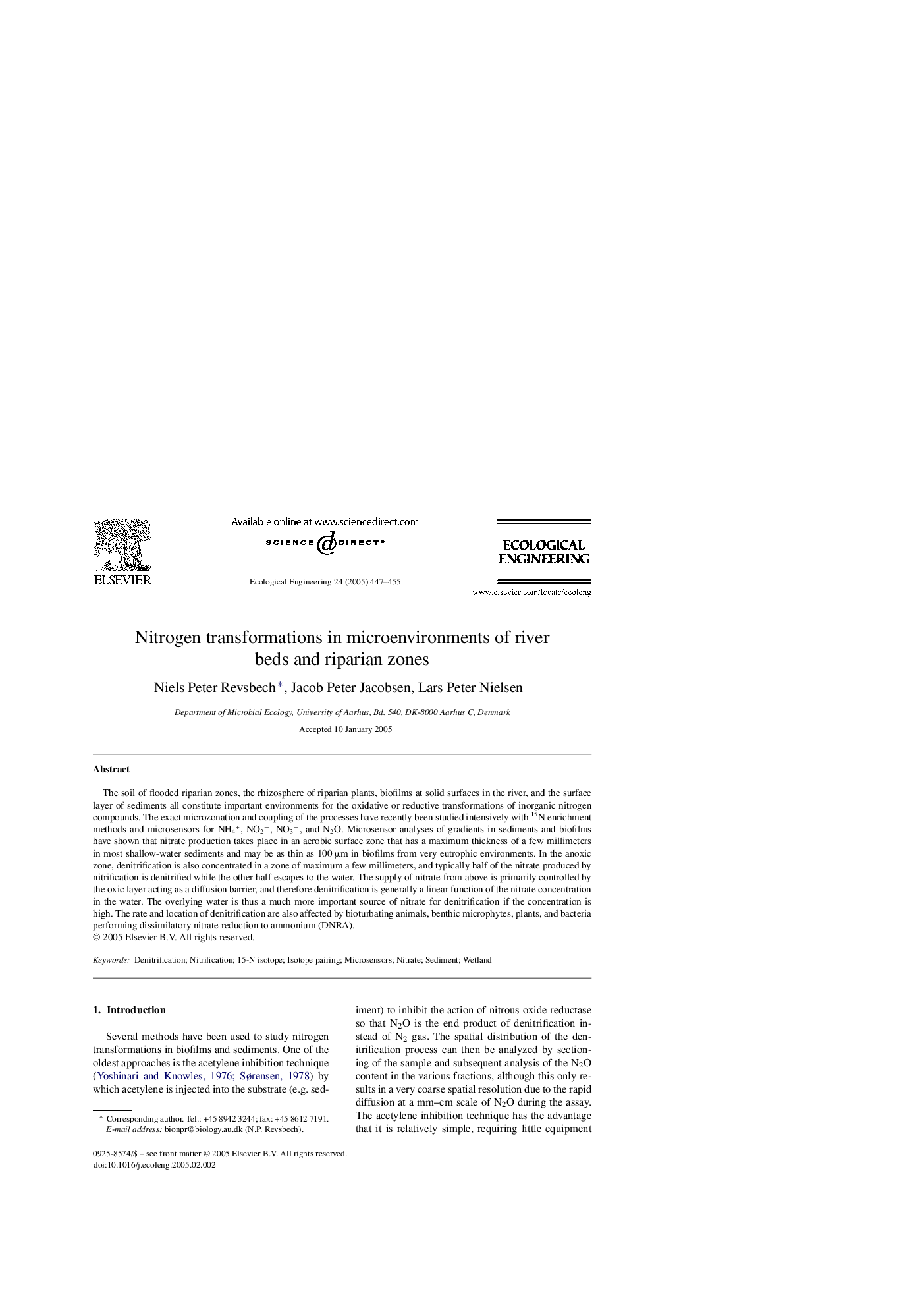| Article ID | Journal | Published Year | Pages | File Type |
|---|---|---|---|---|
| 9447532 | Ecological Engineering | 2005 | 9 Pages |
Abstract
The soil of flooded riparian zones, the rhizosphere of riparian plants, biofilms at solid surfaces in the river, and the surface layer of sediments all constitute important environments for the oxidative or reductive transformations of inorganic nitrogen compounds. The exact microzonation and coupling of the processes have recently been studied intensively with 15N enrichment methods and microsensors for NH4+, NO2â, NO3â, and N2O. Microsensor analyses of gradients in sediments and biofilms have shown that nitrate production takes place in an aerobic surface zone that has a maximum thickness of a few millimeters in most shallow-water sediments and may be as thin as 100 μm in biofilms from very eutrophic environments. In the anoxic zone, denitrification is also concentrated in a zone of maximum a few millimeters, and typically half of the nitrate produced by nitrification is denitrified while the other half escapes to the water. The supply of nitrate from above is primarily controlled by the oxic layer acting as a diffusion barrier, and therefore denitrification is generally a linear function of the nitrate concentration in the water. The overlying water is thus a much more important source of nitrate for denitrification if the concentration is high. The rate and location of denitrification are also affected by bioturbating animals, benthic microphytes, plants, and bacteria performing dissimilatory nitrate reduction to ammonium (DNRA).
Related Topics
Life Sciences
Agricultural and Biological Sciences
Ecology, Evolution, Behavior and Systematics
Authors
Niels Peter Revsbech, Jacob Peter Jacobsen, Lars Peter Nielsen,
